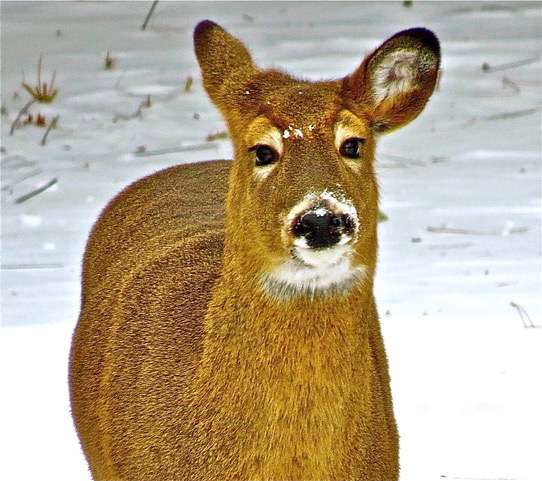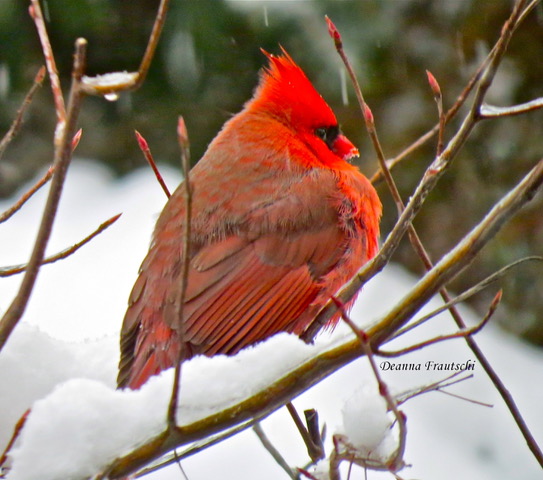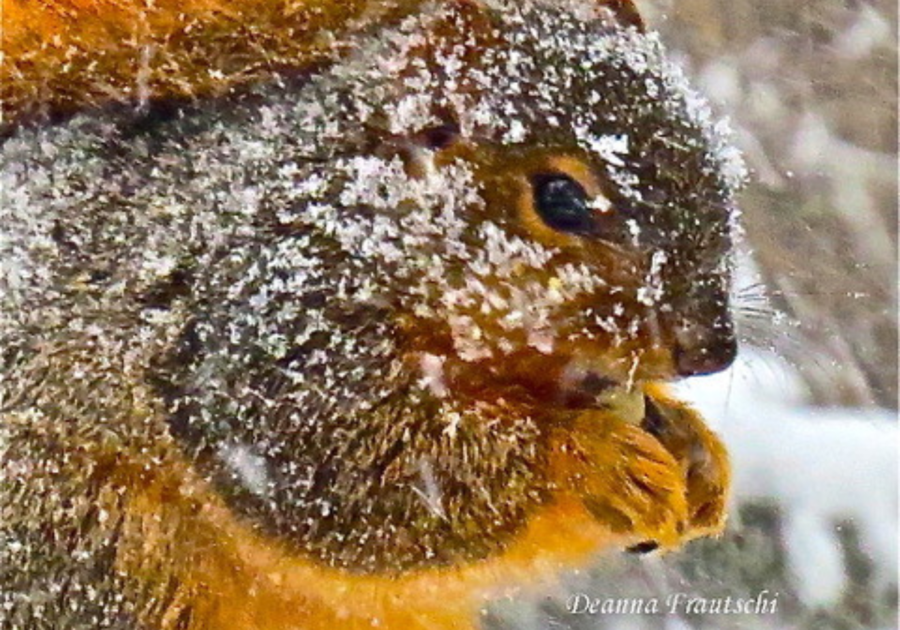As humans, we pull on a winter coat when the temperature drops outside and the snow begins to fall. If we’re lucky it’s an insulated one, perhaps with down feathers or simulated material that acts as a natural insulator, trapping warm air and keeping our bodies warm.
We adapted that strategy from our bird friends. They trap warm air in their downy feathers (beneath their flight feathers). This helps keep them warm when the temperatures drop. They puff out their feathers and trap the warm air against their bodies. That’s why we often think they look fatter in the winter.
At night birds often roost together to conserve heat and will sometimes use nest boxes or tree cavities for this purpose. Some just hunker down in between the pine and fur tree boughs to help them make it through long, cold nights.

Finding an open water source can be very difficult during the winter months so putting out water can be very important since birds need water to drink and keep their flight feathers in good shape. We can help a lot by supplying a heated bird bath when the ground is frozen. While it’s true that birds can melt snow in their beaks, it also lowers their body temperature.
Supplying some high-fat foods such as suet or peanuts for our backyard bird friends can also be helpful to their survival when natural sources of food are covered with snow and frozen.

Other animal survivors
Other animals like squirrels, put on an extra layer of fat that helps them stay warm as they stay cozy in their nest box or while out foraging for food in the snow. They start building fat in the fall, as well as gathering food for the winter and stashing it in places where they can easily find it.
Deer have hollow hairs on their body that trap air and help them stay warm with an inner layer of thicker fur beneath the hollow ones. They also build fat stores when they can and often stay close together at night so their body heat can be shared.
Illinois winters can be tough so it’s important that animals who reside outside have ways of coping that help them survive through freezing days and nights.

Deanna Frautschi is a local Master Naturalist who is passionate about connecting families with nature. Using her knowledge of wildlife and her photography skills, she helps others enjoy the nature around them. If you have any questions about exploring nature with your children and grandchildren, you may contact Deanna at Decardinal@aol.com. Join the hundreds who follow her on Facebook where she posts photographs and short video clips of birds and other wildlife taken on her travels as well as in her yard. You can also join her "Hummingbirds Anonymous" Facebook group page.
Story and photos by Deanna Frautschi.



